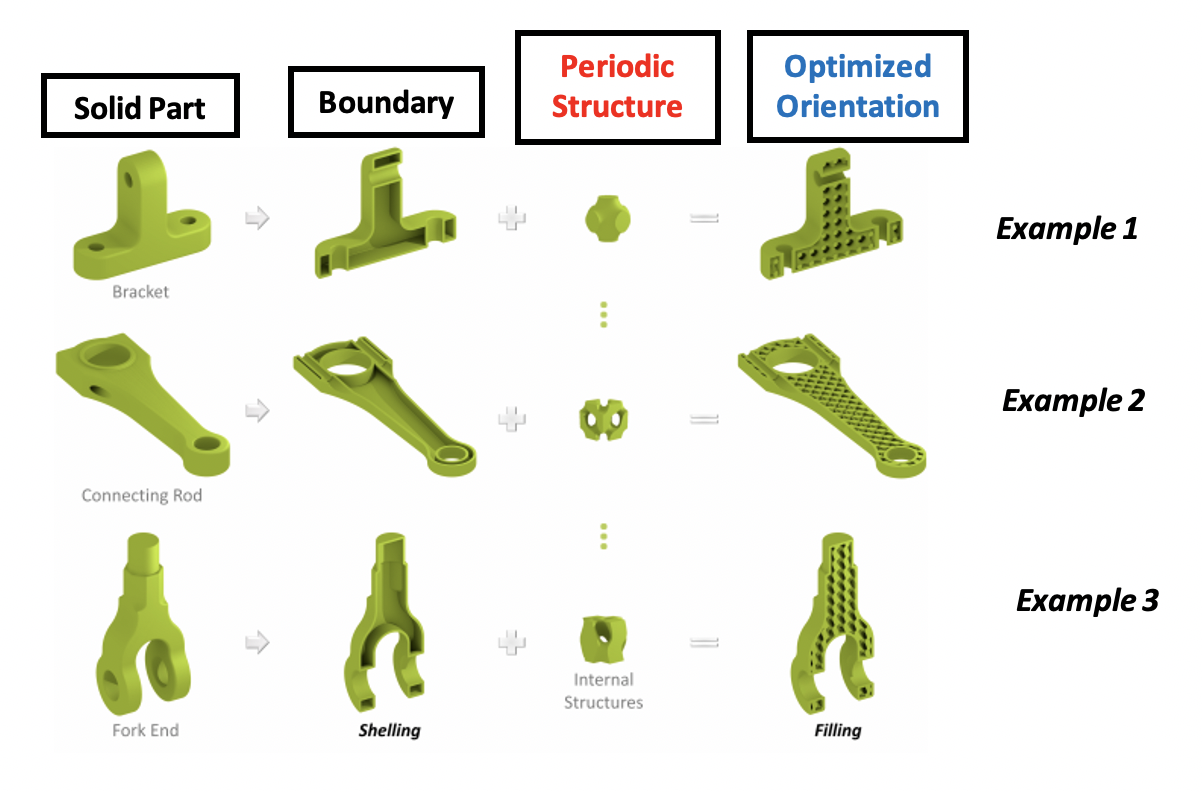3D Printing Structural Strength Optimization
Method for optimizing the design of lightweight, high-strength parts with reduced material costs and increased heat dissipation.
Additive manufacturing (3D printing) provides increased design and production flexibility. Leveraging that capability, University at Buffalo (UB) researchers have developed an optimization system for designing lightweight, high-strength functional parts. Designed parts can be manufactured with less material and have increased heat dissipation as compared to solid parts.
The system optimizes any 3D printed shape, based on the forces the shape will be subjected to. The technology is demonstrated in the figures below. The solid part is first created in the software and the boundary region is defined. Then the projected forces the part will be subjected to are added. Simulations are run to determine the periodic structure and internal orientation that is optimal for both weight savings and strength. A final optimized part design is rendered for production. Three examples are provided in the figure below.

- System helps design lightweight, high-strength functional parts.
- Increased heat dissipation compared to solid parts.
- Reduced material costs.
Ideally suited for designing and 3D printing metal parts.
US Patent Application 17/141,169 filed January 4, 2021 US20210216683A1
Methods and software validated in laboratory setting.
Available for licensing.
University at Buffalo is seeking a development and commercialization partner.
Publication: Link to online source.
Patent Information:
| App Type |
Country |
Serial No. |
Patent No. |
Patent Status |
File Date |
Issued Date |
Expire Date |
|